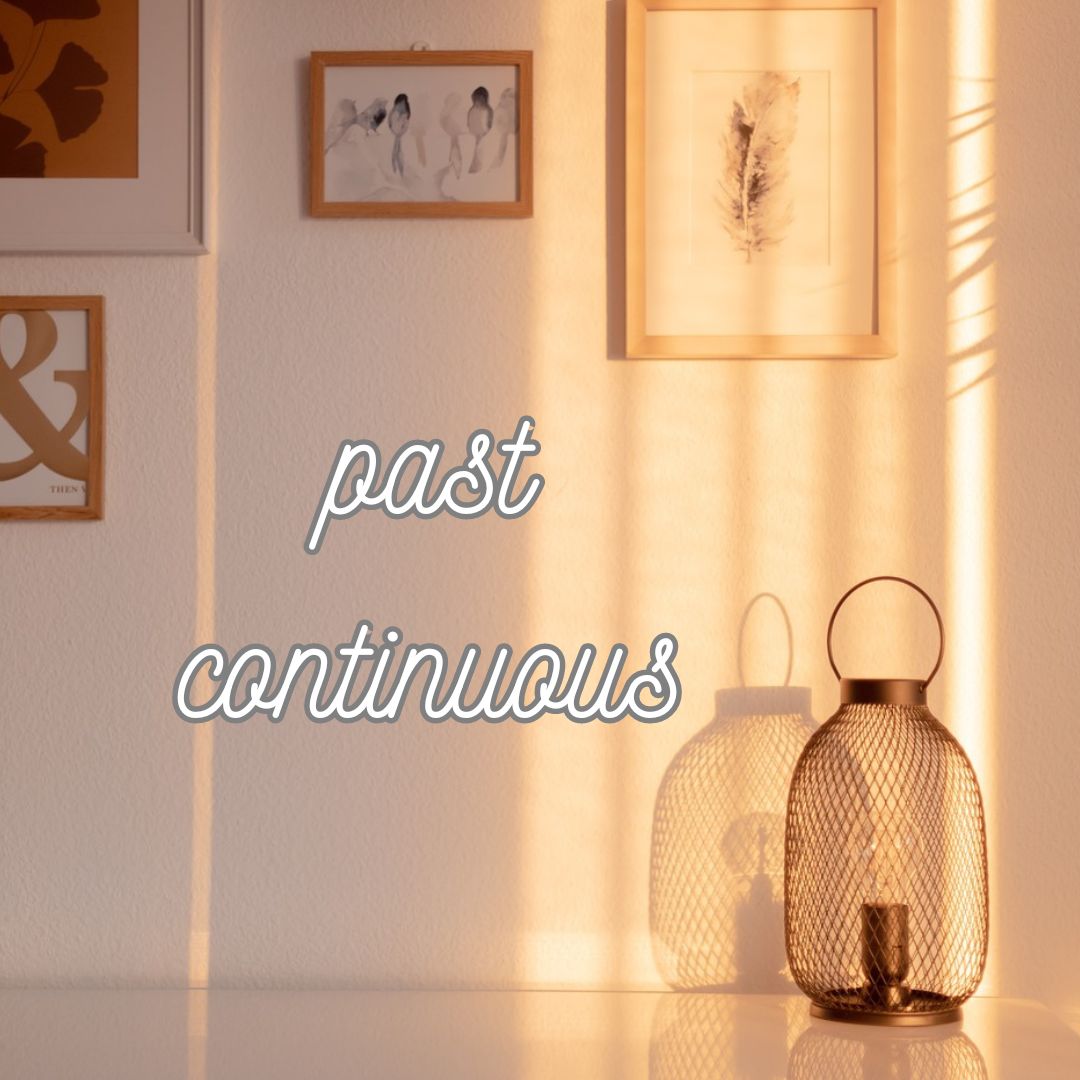The Past Continuous tense

The Past Continuous tense
Affirmative form:
Subject + was/were + present participle (ing)
| Subject | Verb to be | Present Participle (-ing) |
| I | Was | Studying |
| You | Were | Working |
| He/She/It | was | Playing |
| We | were | Singing |
| They | were | Dancing |
Examples:
I was studying for my exam.
You were working hard yesterday.
He was playing with his friends.
We were singing a song together.
They were dancing all night long.
Negative form:
Subject + was/were + not + present participle (ing)
| Subject | Verb to be | Not | Present Participle (-ing) |
| I | Was | not | Studying |
| You | Were | not | Working |
| He/She/It | Was | not | Playing |
| We | Were | not | Singing |
| They | Were | not | Dancing |
Examples:
I was not studying for my exam.
You were not working hard yesterday.
He was not playing with his friends.
We were not singing a song together.
They were not dancing all night long.
Question form:
Was/Were + subject + present participle (ing)?
| Verb to be | Subject | Present Participle (-ing) |
| Was | I | studying? |
| Were | you | working? |
| Was | he/she/it | playing? |
| Were | we | singing? |
| Were | they | dancing? |
Examples:
Was I studying for my exam?
Were you working hard yesterday?
Was he playing with his friends?
Were we singing a song together?
Were they dancing all night long?
The Past Continuous tense is used to describe an action
that was in progress at a specific time in the past.
Some common situations with the Past Continuous:
1. To describe an action that was happening at a specific time in the past:
I was studying when the phone rang.
They were playing football at 4 p.m. yesterday.
2. To describe an action that was happening over a period of time in the past:
She was working on the project all morning.
They were walking in the park for hours.
3. To describe two actions that were happening simultaneously in the past:
While she was cooking dinner, he was setting the table.
They were watching TV and eating popcorn at the same time.
4. To describe a repeated action in the past:
Every day at 6 a.m., I was jogging in the park.
They were always arguing about politics.
Some common adverbs with Past Continuous:
At that time: I was studying at that time.
While: She was working while he was watching TV.
All day/night/morning/afternoon: They were dancing all night long.
Constantly: He was constantly checking his phone.
Continuously: The rain was continuously falling.
At that moment: At that moment, I was talking to my friend.
The common situations ( Table 4)
| Situation | Example |
| Action happening at a specific time in the
past |
I was studying when the phone rang. |
| Action happening over a period of time in the past | She was working on the project all morning. |
| Two actions happening simultaneously in the past | While she was cooking dinner, he was setting the table. |
| Repeated action in the past | They were always arguing about politics. |
Some common adverbs with Past Continuous :(Table 5)
| Situation | Adverbs |
| Action happening at a specific time in the past | at that time, then |
| Action happening over a period of time in the past | all day/night/morning/afternoon, constantly, continuously |
| Two actions happening simultaneously in the past | while |
| Repeated action in the past | every day, night, morning, or afternoon, always |
During can also be used with Past Continuous to describe an action that happened within a specific period of time in the past.
Example: During the storm, we were watching TV.
In this sentence, during the storm refers to a specific period of time, and we were watching TV, which describes the action that was happening within that period of time.
Other examples using during with Past Continuous :
During the concert, she was dancing and singing along.
He was playing video games during the entire weekend.
They were walking in the park during the sunset.
Click here The Past Continuous tense
Click here The Present Continuous tense
Click here The Future Indefinite in the Past
Click here The Future Indefinite tense ( the Future Simple)
Click here The Past Indefinite Tense ( The Past Simple)
Click here The Present Indefinite Tense (the Present Simple)
Click here The Indicative Mood – the Active Voice